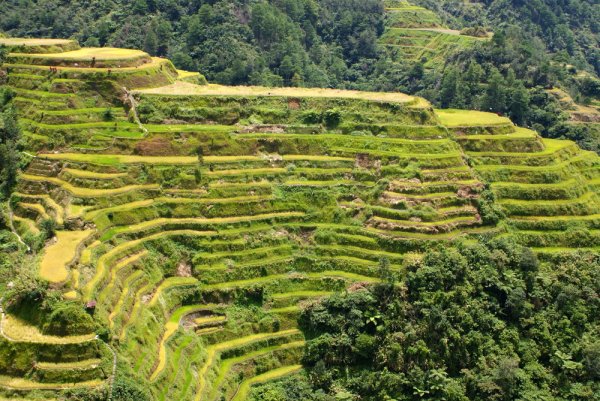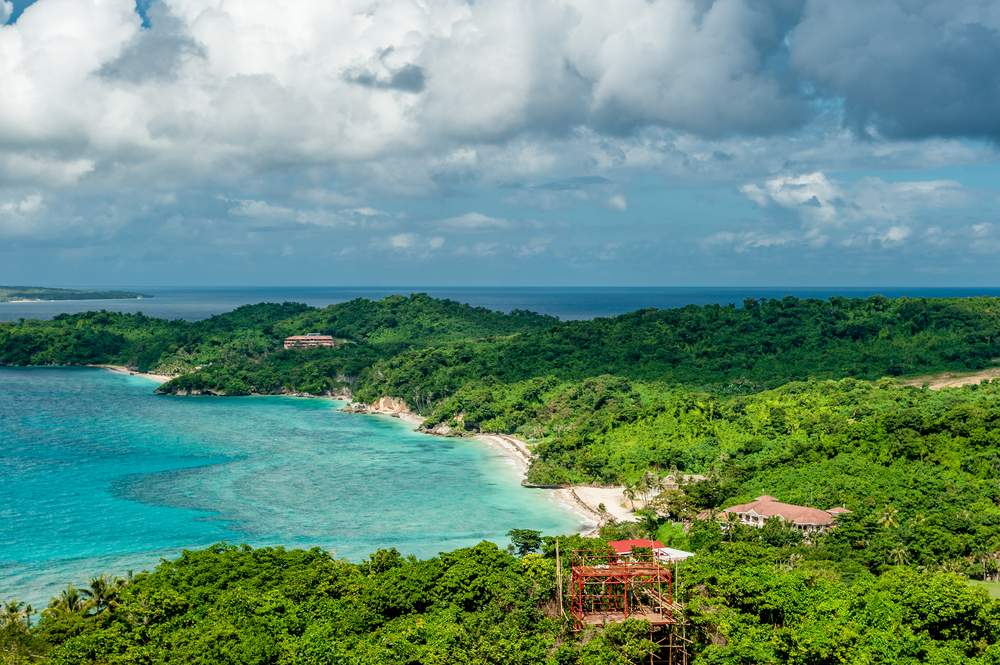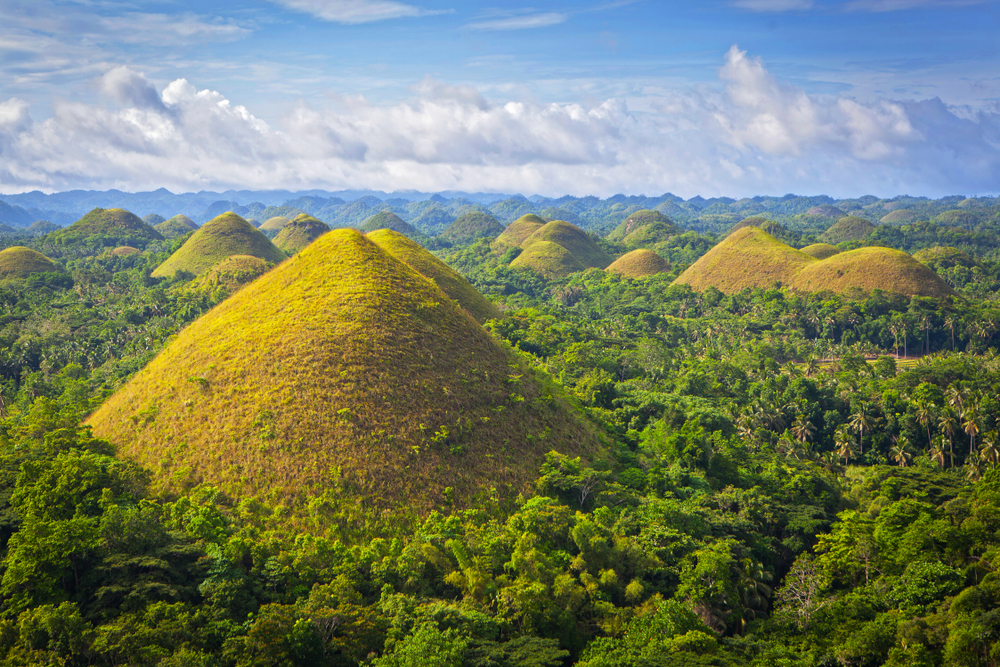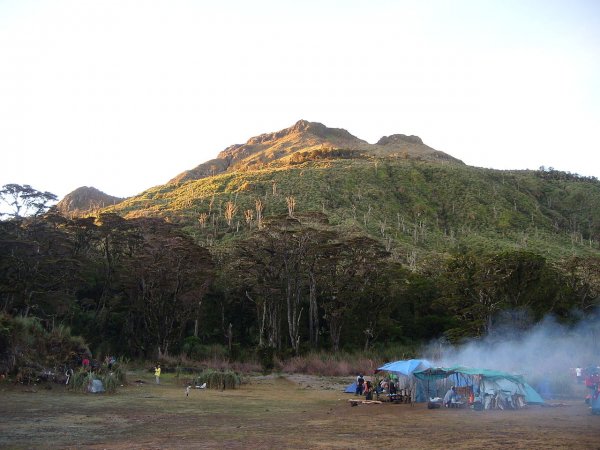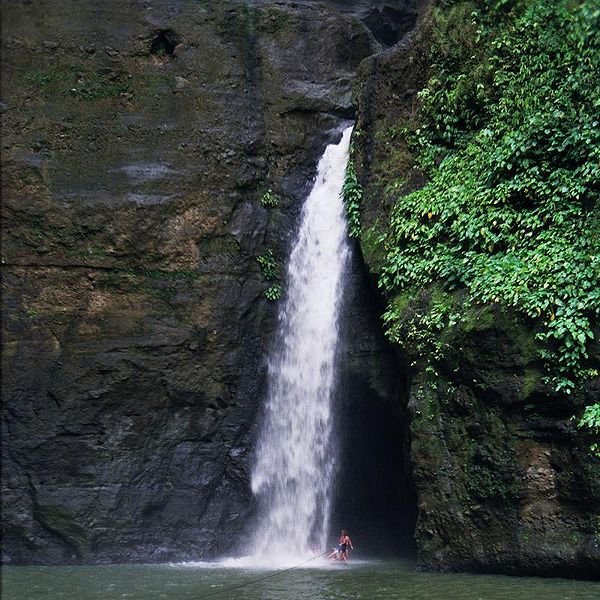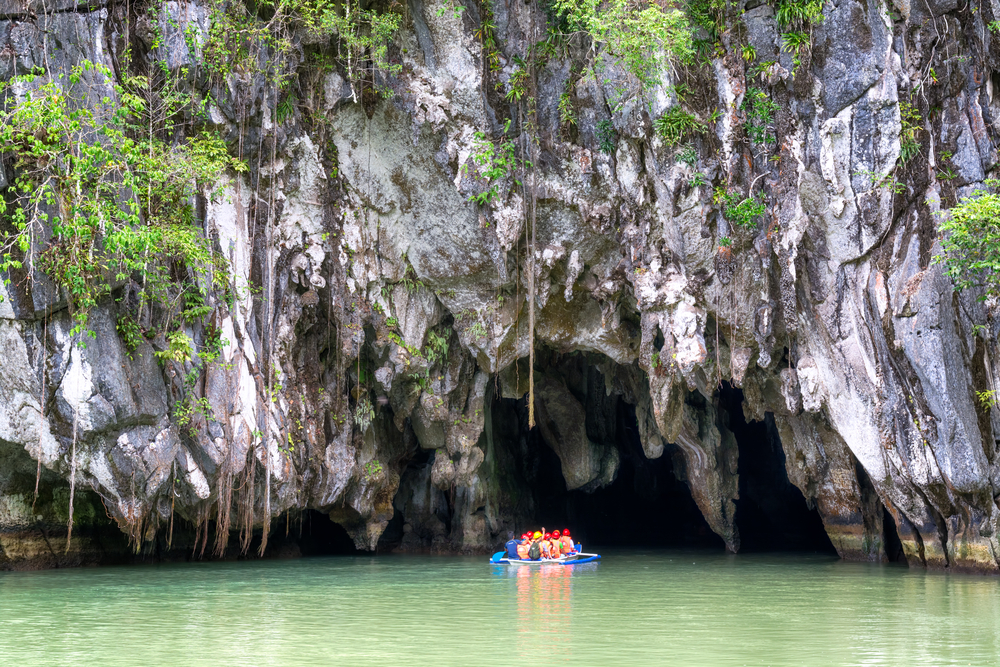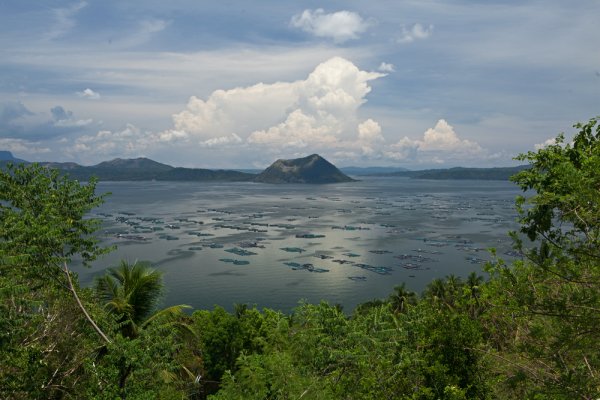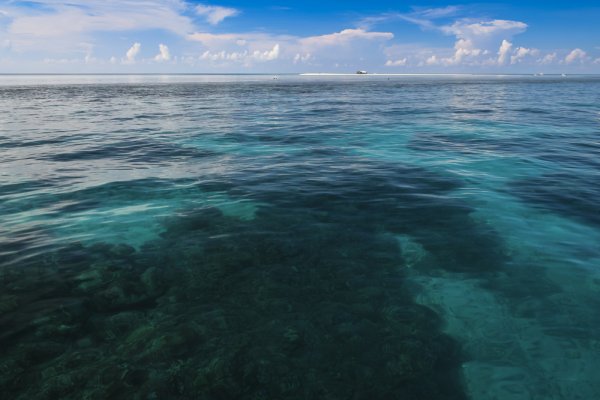Points of Interest
Banaue Rice Terraces
Hagdan-hagdang Palayan ng Banaue Banaue, Ifugao, Philippines
Widely referred to as the eighth wonder of the world, the Banaue rice terraces are 2,000- to 3,000-year-old terraces that were carved out of the Ifugao mountains by the Batad indigenous tribes. It is widely thought that the terraces were carved without any machinery to provide for the step cultivation of rice. It stands as a reminder of the engineering skills and strength of the Ifugao tribes. The terraces are situated approximately 1,524 meters (5,000 feet) above sea level and spread across an area of about 4,000 square miles. They are spread across the provinces of Apayao, Benguet, Mountain Province, and Ifugao. The main tourist feature of the terraces is the hiking trails.
Boracay Island
Northwest corner of Panay Island
Western Visayas, Aklan, Philippines
Boracay Island, one of the most visited spots in the Philippines, has the shape of a dog bone. Originally inhabited by the Ati tribe, the island covers a total land area of 10.32 square kilometers (3.95 square miles). The island's two main tourist beaches are White Beach and Bulabog Beach, which face each other and lie in the narrow central area. These beaches are popular for shopping, windsurfing, and kite boarding. The island also hosts events, like the Asian Windsurfing Tour, festivals, like the Ati-Atihan Festival, and dragon boat races. The island's other attractions include a world-renowned golf course, Mount Loho, Bat Caves, Dead Forest, and the Kar-Tir Shell Museum.
Chocolate Hills
Bohol, Philippines
Bohol's most popular tourist attraction, the Chocolate Hills are an extraordinary geological formation of about 1,300 same-sized, grass-covered, cone-shaped limestone hills spread over an area of 50 square kilometers (19.3 square miles). It derives its name from the brown-colored grass that covers the hills during the dry seasons. Two of the hills have been made into resorts: one is the Chocolate Hills Complex in Carmen with a restaurant, a swimming pool, and an observation deck, and the other is Sagbayan Peak, a hilltop resort and entertainment park.
Manila Bay
Luzon
Manila, Philippines
Manila Bay is one of the world’s most exquisite natural harbors. It encompasses approximately 1,700 square kilometers (656 square miles) and measures 60 kilometers (37 miles) long and up to 48 kilometers (30 miles) wide. There are many islands across the bay’s entrance. The largest is Corregidor, which divides the bay into two channels. The south channel contains El Fraile Island, which has an area of 1.6 hectares (4 acres) and houses the huge concrete and steel remains of Fort Drum (a defensive island fortress). A variety of water recreation is available, such as swimming, snorkeling, scuba diving, boat tours, fishing, parasailing, and more.
Mount Apo
Mindanao, Philippines
Mount Apo ("master" or "grandfather"), a large composite volcano, is located on Mindanao Island, 32 kilometers (20 miles) west of Davao City. It is the Philippines' highest mountain peak and rises up to 2,954 meters (9,690 feet). The mountain is flat topped, has three peaks, and a 500-meter-wide (1,640-foot-wide) volcanic crater with a small river on the top. The peak is one of the famous climbing attractions in the country. Mount Apo was proclaimed a national park in 1936 and covers an area of 80,863 hectares (199,819 acres). It is home to 1,258 different varieties of plants representing 296 species, over 270 species of birds, and 118 species of butterflies. The Philippine eagle is only found here.
Pagsanjan Falls
Lumban-Caliraya-Cavinti Road
Laguna, Philippines
Pagsanjan Falls is a 91-meter-tall (300-foot-tall) waterfall and the main tourist destination of the Pagsanjan municipality. In order to reach the falls, one has to ride through 14 winding rapids on bancas (local canoes). The ride along the rapids is the main feature of the journey. The gorge, the entrance to the falls, is surrounded by rough cliffs that rise to over 91 meters (300 feet). During rainy seasons, there are over 19 mini-falls on the way, like the Talahib Falls, Kaluykuy Falls, and Bridal Veil Falls. The falls drop down from a rocky cliff in full grandeur, and behind the cascading waters lies a secret cave called the Devil's Cave, which resembles a devil's face.
Puerto Princesa Subterranean River National Park
Saint Paul Mountain Range
Palawan Island, Puerto Princesa, Philippines
Puerto Princesa Subterranean River National Park, also known as St. Paul's Subterranean River National Park, is a famous national park. The park's primary and most spectacular feature is the limestone mountain landscape with an underground river, the second longest in the world. The river flows through a cave and drains directly into the South China Sea, and the lower part has tidal influences. As it flows through the cave, the river forms stalactites, stalagmites, and many huge chambers. The park is also the site of important forests and a biodiversity conservation project.
Taal Volcano
Batangas, Luzon, Philippines
Taal Volcano, one of sixteen "Decade Volcanoes" identified by the United Nations as worthy of study to improve disaster management techniques, is the world's smallest active volcano. The volcano is an island in Lake Taal, which is located within a 24- to 29-kilometer-wide (15- to 18-mile-wide) caldera, caused by eruptions between 100,000 and 500,000 years ago. Succeeding eruptions have formed an island called Volcano Island, which covers an area of 23 square meters and consists of 47 diverse overlapping cones and craters. Taal Volcano has erupted many times since 1572.
Tubbataha National Marine Park
Sulu Sea, Palawan, Philippines
Tubbataha (literally "a long reef exposed at low tide") Reef, conserved as the Tubbataha National Marine Park, is one of the richest ecosystems in the area. The reef is comprised of two coral atolls, namely South and North reefs. Two islets jut out from the atolls, separated by an eight-kilometer-wide (five miles) channel. The reef stretches across an area of 96,720 hectares (239,000 acres) and is home to 396 coral species and nearly 500 fish species representing 46 families, many of which are already endangered. The park is very popular with divers because of the deep coral walls. Tubbataha also houses a bird sanctuary.
Copyright © 1993—2025 World Trade Press. All rights reserved.

 Philippines
Philippines 